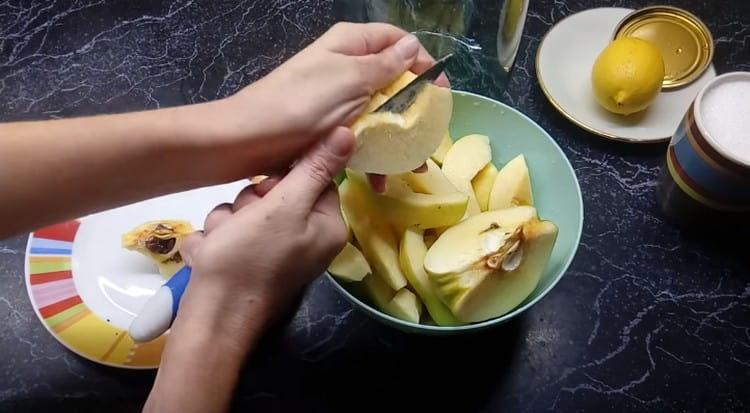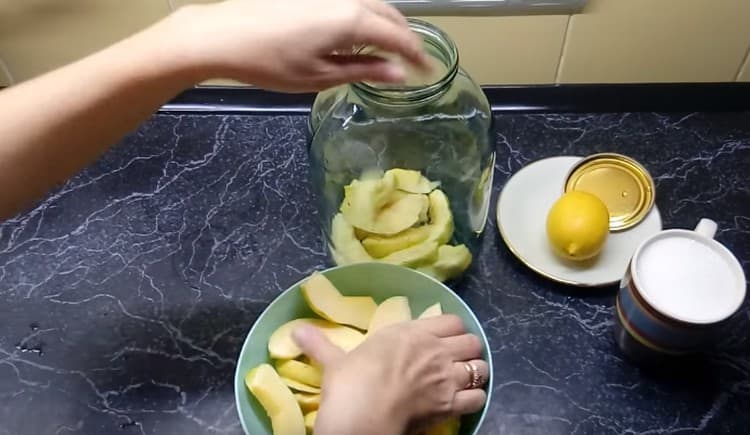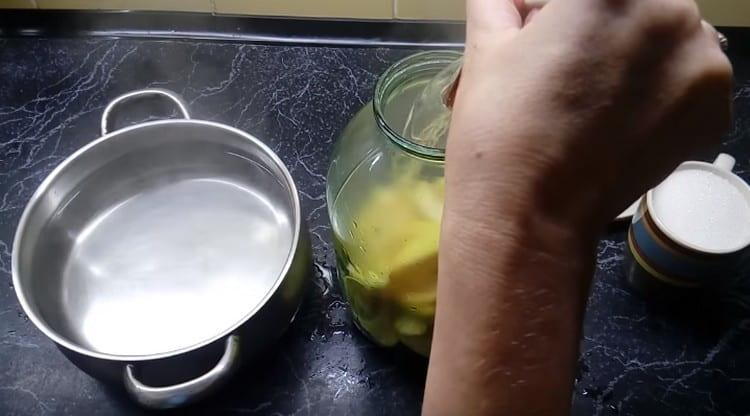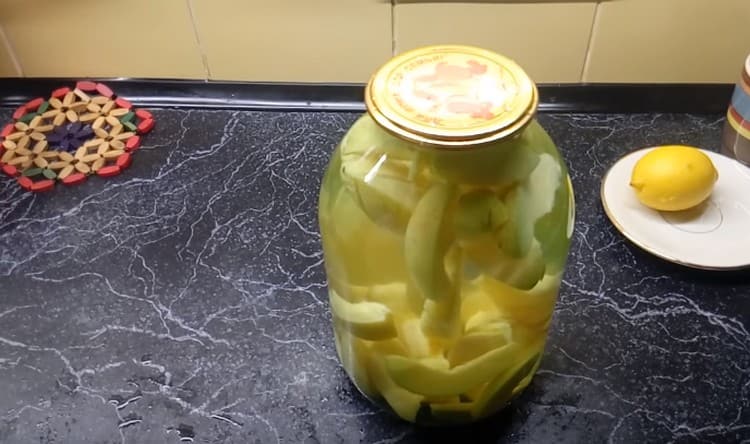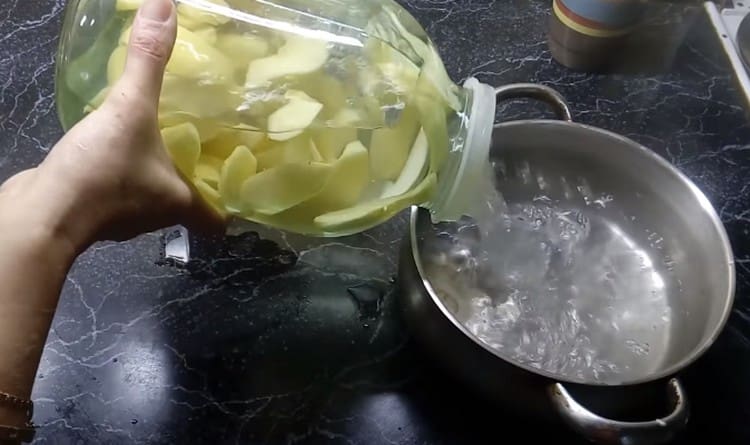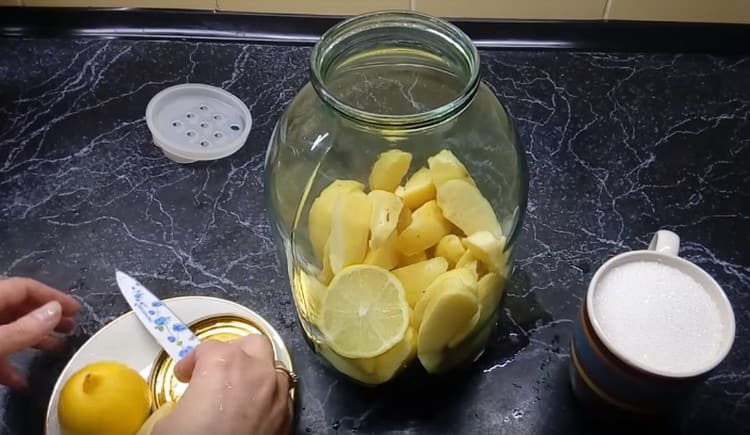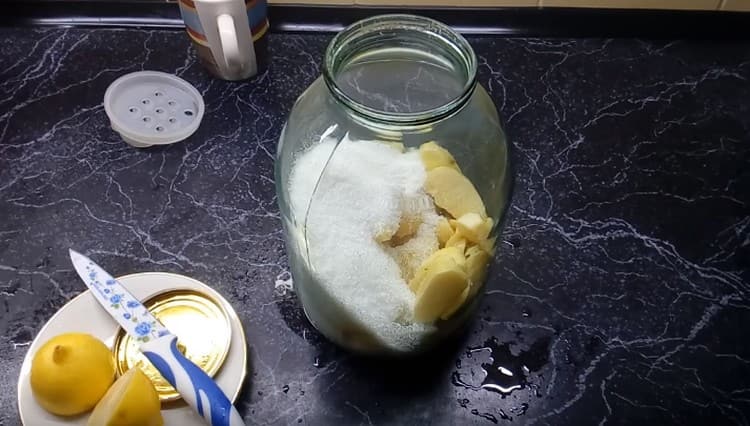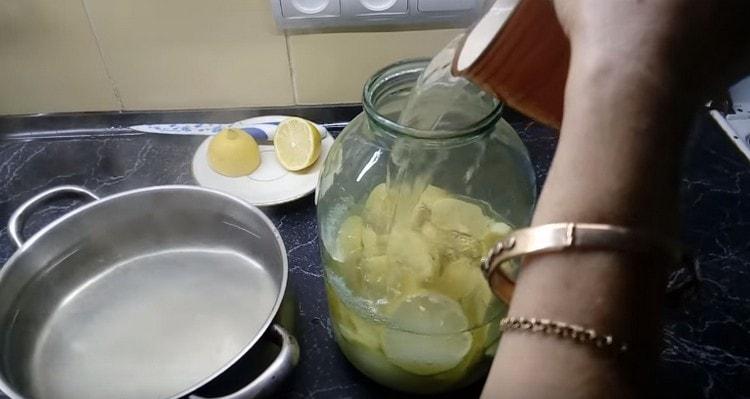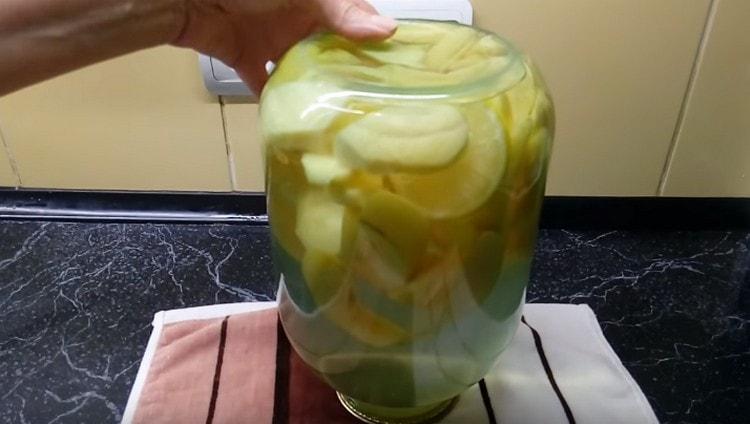Kitchen appliances and utensils:
- plate;
- medium-sized bowl;
- sharp knife;
- cutting board;
- pan with a lid;
- 3 liter glass jar;
- lid for seaming.
Ingredients
| Quince | 500 g |
| Sugar | 300 g |
| Lemon | 1 slice |
| Water | 2.5 l |
Step cooking
Compote
- Wash quince fruits well under running water, as the skin of the fruit is covered with small hairs. Divide the fruit into several parts and remove the core with bones.

- Cut the quince into oblong pieces or into medium-sized cubes.

- In the meantime, boil 2.5 liters of water. Place the chopped quince on the bottom of the sterilized jar.

- Pour fruit with boiled water until the jar is full.
 Be careful, fill in water in small portions in order to avoid cracks and chips of glass.
Be careful, fill in water in small portions in order to avoid cracks and chips of glass. - Also cover the jar with the sterilized lid and leave it on for 20 minutes. During this time, the fruits in the jar are steamed.

- After the time has passed, drain the water from the can back into the pan and put on fire. Bring to a boil.

- Cut the lemon into circles, put one of them in a jar of quince.
 Avoid getting the seeds in the drink, as they can give bitterness to the taste.
Avoid getting the seeds in the drink, as they can give bitterness to the taste. - Add 300 g of sugar.

- Refill the boiled water in small portions until the containers are full.

- Cover and roll up the jar. After seaming, be sure to turn the container over to the lid to check whether the lid is tightly rolled and does not let air through. Wrap a closed jar with a blanket or a thick cloth. Put in a warm place.

Methods of sterilizing containers
- The most common way is to steam sterilize cans over a pan. To do this, fix a sieve over the boiling surface of the pan, put the container with the neck down on top. Steam for 20 minutes.
- An equally relevant method is steaming cans in a microwave. Fill the bottom of the can with water and place the container in the oven for 3 to 5 minutes.
- Using the oven, steam the cans after washing at a temperature of 160º until the water completely disappears on the container walls.
Ways to serve and decorate dishes
Quince fruits are used in cooking mainly after heat treatment, in raw form they are consumed less often. That is why fruit preservation will become the basis for various recipes.
For example, you can use fruit from compote to make jam, jam, marmalade and sauces. Also, canned quince can easily become the main ingredient in salads and a side dish for meat dishes, as it is an excellent neutralizer of fat content.
Video recipe
Use the video to clarify the intricacies of compote preparation, proper processing and cleaning of quince fruit, as well as the spinning process.
Other drink recipes
Dried fruits compote
Pear compote
Gooseberry compote
Compote of Ranetki


